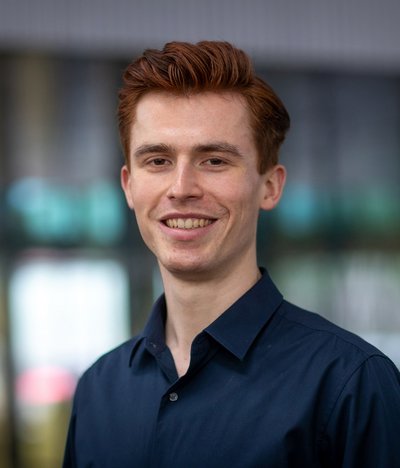Thijs van Veldhuisen
Department / Institute
Group

RESEARCH PROFILE
Signaling pathways in the cell involve complex protein-protein interaction (PPI) networks. Hub proteins regulate these PPI networks by dynamic protein localization. By studying PPIs in artificial cells, these biochemical phenomena can be studied in a controlled environment. In my work, I use amylose-based coacervates as an artificial cell model for studying native PPIs and artificial signaling systems. In this system, the crowded environment formed by the complex coacervates closely resembles the cytosol. The 14-3-3 hub protein is incorporated as a model protein due to its clinical relevance and plethora of binding partners. Also, I study the kinetics of binding and dissociation by incorporating enzymes that regulate binding of peptide or proteins to 14-3-3. In my other main research line, I focus on setting up artificial signaling transduction by using controlled protein localization as an output to an external stimulus.
ACADEMIC BACKGROUND
Thijs W. van Veldhuisen (1997) was born in Wageningen, NL, and grew up in the picturesque Achterhoek region. In 2017, he received his BSc degree in Chemical Engineering at the University of Twente. Here, he carried out research in the group of Prof Jeroen Cornelissen related to assembly of virus-like particles based on synthetic polymer templates. Afterwards, he went on to study MSc Molecular & Materials Engineering at the University of Twente. During an internship in the group of Prof Stefan Hecht at the Humboldt University of Berlin, he worked on the synthesis of phenol-based diarylethenes for the resolution of chiral amines by dynamic covalent chemistry. Afterwards, he carried out his master's thesis in the lab of Jos Paulusse, PhD, where he worked on the synthesis of in situ crosslinked nanogels with sulfonium moieties for gene delivery, graduating in August 2020. In September 2020, he joined the van Hest lab as a PhD candidate to work on synthetic signaling in coacervate-based artificial cells. Thijs' current research interests include 3D printing, liquid-liquid phase separation, protein engineering, and supramolecular chemistry.
Ancillary Activities
No ancillary activities